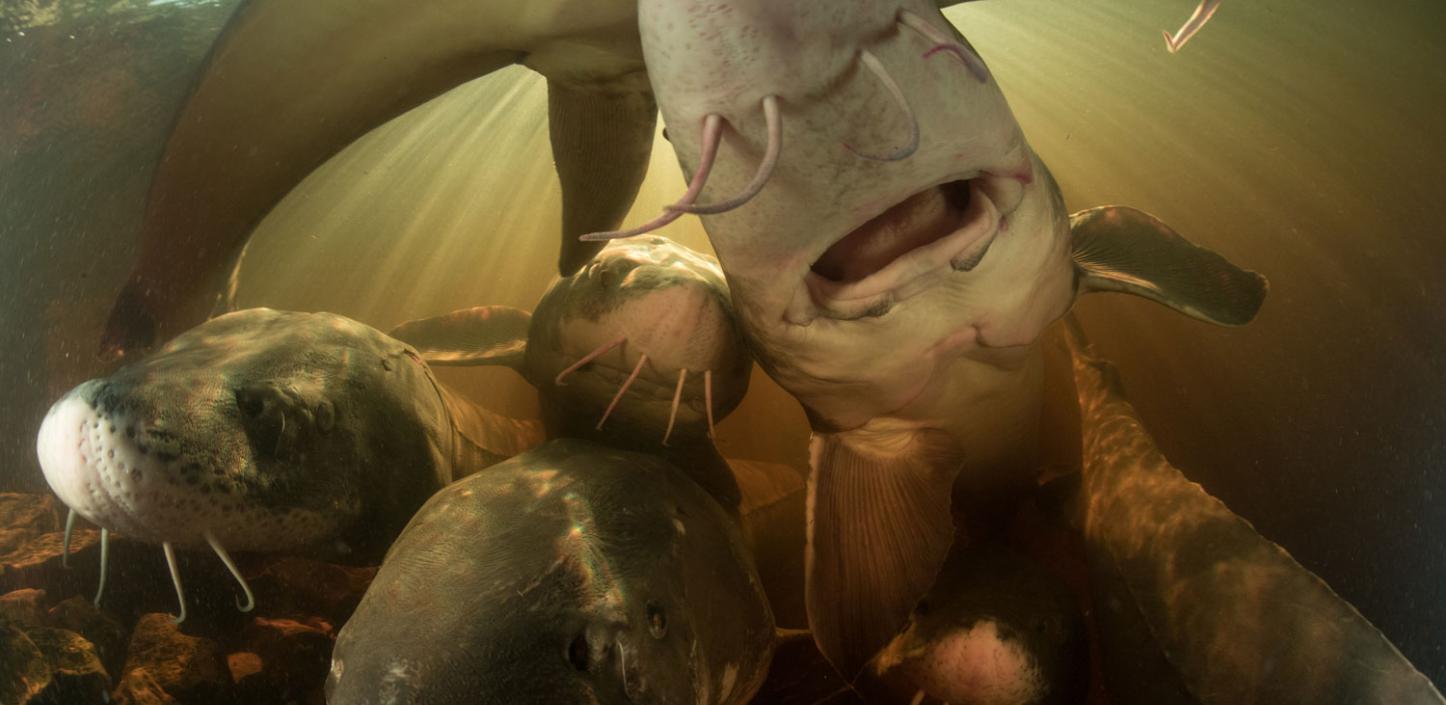
Helping Ancient Fish Survive in Modern Times
Few freshwater fish capture the imagination quite like lake sturgeon. These armor-plated giants belong to a family of fish that dates back to the time of the dinosaurs, 135 million years ago. Lake sturgeon can grow up to 9 feet long, and females can live to be 150 years old.
Such ancient fish may seem like the ultimate survivors, but a confluence of modern challenges, including overfishing, poor water quality and barriers to movement, have led to dramatic declines in the abundance of lake sturgeon. Once common throughout the central United States, these fish are now listed as either threatened or endangered by 19 of the 20 states within its original U.S. range.
Efforts to save the species have surged in recent decades, due in large part to public fascination with the fish and innovative new partnerships. One prime example of such collaboration can be found on the Menominee River, which forms part of the Michigan-Wisconsin border. In 2017, the River Alliance of Wisconsin, a private hydroelectric dam operator, and multiple state and federal agencies marked the completion of a project to ensure lake sturgeon could safely pass through or around two large dams.
“Sturgeon have a home river,” explained Sharon White, associate director of the River Alliance of Wisconsin, which spearheaded the project. “If the Menominee is their home river, then biologically, that’s where they have to go to spawn. Before this project, sturgeon could only get a mile upstream. By working with a private hydro-operator and state and federal agencies, we’ve been able to add an additional 20 miles of spawning habitat for these fish.”
The multiphase project, which was partly funded by two NFWF grants totaling $4.3 million, includes a fish elevator and sorting tank to choose the best adult sturgeon to transport upstream to spawn. Other improvements keep juvenile sturgeon from being sucked into the dam’s turbines on their way downstream to Lake Michigan.
This single project is expected to help increase the population of adult sturgeon in the lake by an estimated 600 percent.
NFWF supported the Menominee River project through its Sustain Our Great Lakes program, which is designed to improve the ecological health of the Great Lakes basin. In addition to improving aquatic connectivity, the program also improves shoreline habitats and wetlands, combats invasive species, reduces runoff and restores native vegetation.
Contributing Partners: ArcelorMittal, National Oceanic and Atmospheric Administration, U.S. Environmental Protection Agency, U.S. Fish and Wildlife Service, U.S. Forest Service, USDA’s Natural Resources Conservation Service
Contact: Matt Winter 202-857-0166